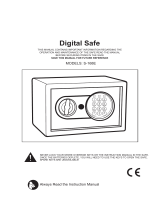
Snohomish County PUD Radio Operations Manual • Rev. 6/03
TABLE OF CONTENTS: PORTABLE RADIOS
Section I: General Information ................................................................................. 1
What is the Coverage and Transmitting Distance of the Radio System? ................. 2
How are Radio ID Numbers assigned? ......................................................................... 2
Who will have Radios?.................................................................................................... 2
What are Talkgroups? ..................................................................................................... 3
Where Do I Go for Help With My Radio? ...................................................................... 3
How Does the Computerized Radio System Work? ..................................................... 3
What Happens When the Computer System Fails? ..................................................... 4
How “Failsoft” Works --------------------------------------------------------- 4
Identifying Controls, Switches, Indicators and Connectors ...................................... 5
Interpreting the Display ................................................................................................. 9
Display Light ------------------------------------------------------------------ 9
Status Annunciators -------------------------------------------------------- 10
Section II: Basic Radio Operation ..........................................................................13
Interpreting the Alert Tone Indications ..................................................................... 16
Tu rning the Radio On or Off ........................................................................................ 20
Selecting a Talkgroup [Zone] ...................................................................................... 22
Programmable HOME Button ..................................................................................... 25
Tr ansmission Procedures ............................................................................................ 26
Tr ansmitting ---------------------------------------------------------------- 26
Receiving a Transmission -------------------------------------------------- 28
Paging Procedures ........................................................................................................ 30
Sending a Page-------------------------------------------------------------- 30
Answering a Page ----------------------------------------------------------- 34
Telephoning Procedures .............................................................................................. 36
Making a Telephone Call --------------------------------------------------- 36
Calling a Radio from a Telephone ------------------------------------------ 38
Receiving a Telephone Call ------------------------------------------------- 40
Private Call Procedures ................................................................................................ 42
Making a Private Call ------------------------------------------------------- 42
Answering a Private Call --------------------------------------------------- 46
Blue Button Operations................................................................................................ 48
i
Table of Contents





















